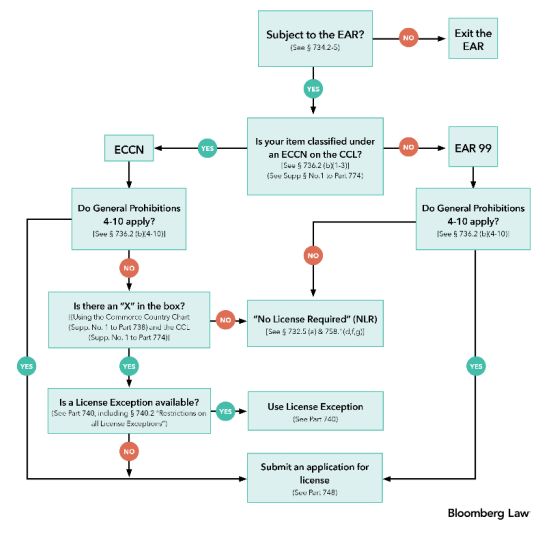Diaz Trade Law is enthusiastic to announce Bloomberg Law published another one of our articles, "Export Licensing Under EAR"! Below is the article reproduced with permission for your reading pleasure. You can read the article here (where you'll have the ability to access all of the great hyperlinks).
U.S. export control laws restrict the export of certain goods, technology, information, and services without prior authorization. While there are several categories of export controls, the two most important are the Export Administration Regulations (EAR) and the International Traffic in Arms Regulations (ITAR).
The vast majority of controlled exports fall under EAR, while the ITAR's scope is limited to only military and defense-related articles, services, information, and technology. The U.S. Department of Commerce's Bureau of Industry & Security (BIS) enforces EAR under 15 C.F.R. Parts 730-774. This article provides an overview of export licensing requirements under EAR. EAR governs whether a person/entity may:
- Export an item from the U.S.
- Reexport that item from a foreign country
- Transfer an item from one person to another
The purpose of EAR is to safeguard U.S. national security interests by ensuring that certain critical technology does not fall into the wrong hands. Violations of EAR carry heavy penalties. An EAR violation can result in civil penalties of $300,000 per violation or twice the value of the transaction, whichever is greater. EAR violations can even result in criminal liability, such as $1 million criminal penalty per violation or up to 20 years in prison.
EAR violations can also result in items being surrendered, loss of export privileges, and harm to an exporter's reputation. A key first step to avoiding the civil and criminal consequences of noncompliance is an informed understanding of export licensing requirements and exceptions.
The following export control decision tree is a flowchart found in Supplement No. 1 to Part 732 of EAR. This article explains how to navigate the export control decision tree.
SUPPLEMENT NO. 1 TO PART 732
Export Control Decision Tree

Export Defined
Under EAR, an export is broadly defined. Exporting for the purposes of EAR includes the traditional concept of exporting— sending an item to anyone outside of the U.S.—but it also includes a transfer or release of a controlled item to any foreign entity or national wherever located, including within the U.S. A foreign national is anyone who is not a U.S. citizen, U.S. permanent resident, or a protected person—such as a political refugee or asylum holder.
For the purposes of EAR, exports include more than physical goods. They include software, technology, and technical information. EAR considers an item an export even if it is not for sale or is leaving the U.S. for only a short period of time.
Click here to continue reading . . .
Originally published in Bloomberg Law
The content of this article is intended to provide a general guide to the subject matter. Specialist advice should be sought about your specific circumstances.


